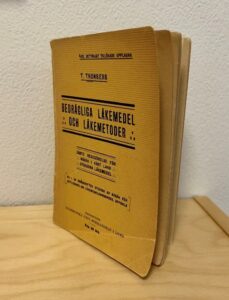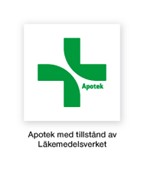Blog by Rui Liu and Susanne Lundin
The COVID-19 pandemic brought up many public health challenges, including a lack of knowledge about how the public tackles health worries on an everyday basis. People were concerned about whether face masks would work, whether home remedies of various kinds could help, and about how to get vaccinated. Simultaneously, as fast as the virus spread, INTERPOL reported an increasing number of falsified products claiming to protect against COVID-19.1 As researchers in medical humanities, this did not surprise us. We have conducted studies on falsified medicines since 2015. A key question driving our studies is what can be done to avoid putting the public at risk, now and in the future?
Falsified medicines can be toxic or simply ineffective. And some are so well-faked that only lab tests can determine their contents. Countermeasures are adopted on different levels. National and international health regulatory bodies invest heavily in market surveillance. Front-line medical professionals are called to stay alert when patients report unusual side effects linked to medicines purchased from unknown sources. And when it comes to broader public safety, population-wide health campaigns help raise awareness about safe medicine access. Yet falsification still exists and causes harm.
We employ historical comparison as a tool to identify how similar public health situations were tackled previously and to pinpoint the new challenges ahead. History shows that during previous pandemics, the dilemmas between following expert advice and coordinating a liveable everyday life very much resembled what we experienced during COVID-19. To illustrate, we take an example from the Swedish doctor Torsten Thunberg (1873-1952), a professor of physiology at Lund University who educated the public on good self-care practices. When the Spanish flu hit Sweden, Thunberg closely reported on the disease and advised the public to self-isolate. Yet he also recognised that individual context matters. Some people could not afford to be absent from work. We have seen the same dilemma in our own ethnographic studies on medicine access, and other sociocultural studies point to the importance of examining local contexts and an individual’s lifeworld. 2 Both history and the existing literature show that safe medicine access and good self-care practices are not isolated from one’s social life but tightly connected to people’s social roles as community members and to the obligations such roles require.
Besides disease-related crises, new technologies may also lead to imbalances in supply and demand and to illicit medical markets. Thunberg provides another relevant example when we look through the historical rearview mirror. His public engagement included a booklet published in 1910 (fig. 1).3

It was a time when electro-therapeutic devices flooded the health market in Sweden and elsewhere in Europe. The hype surrounding these devices was countered with a lack of scientific evidence. Thunberg’s booklet warned the public to be wary of such products, revealing suspicious marketing tactics: advertisements embellished with numerous medals, giving the impression that the products were awarded prizes; portraits of individuals with titles such as Dr. or Professor featured in marketing material, even though these portraits might have depicted imaginary persons or mere acquaintances of the marketers. Furthermore, Thunberg noted that sometimes before-and-after images of product users were presented to endorse the products’ medical effects, though these effects may not have been scientifically proven. Despite Thunberg’s warnings, the falsified medical devices spread, partly because the trust-building advertising attracted people. Top-down communication from the experts Thunberg represented did not convince the public.
Such advertising ploys may seem outdated and somewhat entertaining to us, but we can see a modernised version of them today on the Internet. Instead of fake medals, websites selling medicines of unknown quality now have high ratings and positive reviews from consumers with names and nationalities that are hard to verify. Additionally, although titles such as Dr. or Professor are no longer prominently displayed in a misleading manner, product homepages feature images of persons or avatars in a doctor’s white coat. All these tactics are employed for the same reasons Thunberg noted over one hundred years ago—to convey a sense of trustworthiness to consumers and to profit from people’s desire to stay healthy and to fit into social norms.
Flipping through Thunberg’s more than one-hundred-year-old booklet, we still sense his strong concern about the risks of using scientifically unproven medicines. Nevertheless, digitalisation differentiates our age from Thunberg’s. Medicines of mixed quality are widely accessible on the Internet; algorithms have become “intelligent” enough to track individuals’ digital traces; and online chat forums offering space for people across the world to share health information and care seeking experiences should also concern us. All these trends have created a need for digital solutions to tackle falsified medicines.
In 2015, the European Commission adopted a logo (fig. 2) to indicate all authorised online pharmacies (and made it mandatory to display), aiming to steer consumers away from illegal ones.

However, like Thunberg’s early twentieth-century warnings, these preventative measures with their one-way communication did not work.4 The public is not a collective whole that uses information in the same way, but a multifaceted collection of groups with different understandings and views.5 In the age of big data, knowledge remains scarce regarding how individuals interact with digital intermediaries, such as search engines, to seek health information. We also know little about how people move across virtual and in-person medical consultations.
Comparing our present medical marketplace with similar situations from the past, we can see that falsified medicines must be regulated, and that people need to be made aware of their risks. Our reading of medical marketing history shows that one-way communication does not work. People tackling everyday medical challenges usually base their decisions on principles that differ from experts’ advice, and public awareness campaigns should be grounded in this knowledge. Voices from the public need to be heard, and humanities disciplines give us the tools to understand them.
Rui Liu holds a PhD in service studies and is a researcher at the Department of Arts and Cultural Sciences at Lund University, Sweden. Her research interests lie in medicine consumption, the provision of formal and informal health services, and the formation of pharmaceutical markets.
Susanne Lundin is a professor in ethnology at the Department of Arts and Cultural Sciences, Lund University, Sweden. Her research includes the social and cultural aspects of health and medical technologies with a focus on moral and legal grey areas.
References
[1] Kerlijn Van Assche et al., “Poor-quality Medical Products in Times of Crisis,” in Medicine Across Borders: Exploration of Grey Zones, eds. Susanne Lundin et al. (Stellenbosch: African Sun Media, 2023) 83–116.
[2] Rui Liu et al., “Risk Awareness in Medicine Access: Methodological Reflections from Fieldwork in a Low-income Setting in South Africa,” in Medicine Across Borders, eds. Susanne Lundin et al., 193-210; Rui Liu et al., “ʻI’m Not a Jukebox Where You Push a Button and Then I Sing’”: Negotiating Medicine Access in Physician-patient Encounters,” Ethnologia Europaea 52, no. 2 (2022):1-24; Vincanne Adams, Nancy J. Burke and Ian Whitmarsh, ”Slow Research: Thoughts for a Movement in Global Health,” Medical Anthropology 33, no. 3 (2014):179–97.
[3] Torsten Thunberg, Om bedrägliga läkemedel och läkemetoder : jämte redogörelse för några i vårt land utbjudna läkemedel, 4 tillök. uppl. ed. (Lund: Gleerupska Univ-Bokhandeln, 1910).
[4] Henrik Funestrand et al., “Substandard and Falsified Medical Products Are a Global Public Health Threat. A Pilot Survey of Awareness among Physicians in Sweden,” Journal of Public Health, 41, no. 1 (2019): e95-e102; Susanne Lundin and Rui Liu. “‘Where and how do you buy medicines?’ A pilot survey of consumption strategies among the public in Sweden,” Journal of Public Health, 42, no. 3 (2020): e268-e71; Amelie Persson et al., “Swedish Community Pharmacy Employees’ Knowledge and Experience of Substandard and Falsified Medical Products: A Cross-sectional Descriptive Survey,” International Journal of Pharmacy Practice 30 (2022): 414–9.
[5] Rui Liu and Susanne Lundin, “Medicines in the Grey Market: A Sociocultural Analysis of Individual Agency,” in Movement of Knowledge: A Medical Humanities Perspective on Medicine, Science and Experience, eds. Kristofer Hansson and Rachel Irwin (Lund: Nordic Academic Press, 2020) 233–58; Johannes Kögel, “The Public You Want, the Public You Get: Exploring the Relationship between the Public and Science in the Debate on Xenotransplantation,” Public Understanding of Science (2024). https://doi.org/10.1177/09636625241232098.